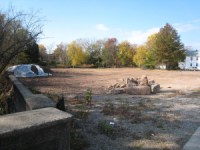How about some light weekend reading about planning and development, a slideshow of “How to Spot the Next Hot ‘Hood,” from MSN Real Estate. In addition to antiquing and building sports stadiums, the 12 points in the list include attracting artists and creative types, something Rahway has been trying to do. Some of the items more relevant to Rahway:
— “Hang with the Gen Y hipsters”: Portland, Ore.’s Pearl District was redeveloped from a rundown warehouse district in the ’90s to “just the sort of place that could be attractive to Gen Y,” featuring hip lofts, brew pubs, bookstores and art galleries, as well as office space for employers. They make the point that Gen Y seeks urban-type neighborhoods that are walkable, with amenities like shopping, recreation and entertainment within walking distance.
— “Follow the artists”: Few artists are rich, which means most of them set up shop in parts of town with cheap rent. But once artists move in…galleries and studios often attract restaurants and shops, turning the “downtrodden zones into culturally rich neighborhoods that often become unaffordable to artists themselves.”

The story cites SoHo in New York and SoMa in San Francisco as two big-city neighborhoods that the underpaid creative set transformed. “Now the streets of SoHo in Lower Manhattan are strewn with upscale galleries and restaurants, and the artists have long decamped for less stylish venues. With its spacious lofts, Williamsburg, Brooklyn, became an attractive location for artists in the past decade. But Williamsburg also has priced itself out of reach. Greenpoint, just to its north, now has embraced many of the artistic émigrés.”
— “Fly Creative: The buzz at the height of the housing bubble was that Seattle-area artists were on the cusp of turning the suburb of Burien, Wash., into the next SoHo. The community of 45,332 sits just south of Seattle and has long been home to legions of workers at Boeing, the aerospace giant. A vibrant arts scene — the city hosts a symphony plus numerous theaters and art galleries — was pulling in the creative set, as well.”
***
An 1,800-seat theater falls into disrepair during ’70s, makes come back with the help of local supporters and government funding. It’s not the Union County Performing Arts Center but the St. George Theatre in Staten Island. In this case, along with $4 million in borough funds to revitalize the theater, a longtime Staten Island resident established a nonprofit to save the edifice and donated her life savings — nearly $1 million — to launch the effort.
From Crain’s New York Business: A star is reborn near waterfront in Staten Island: St. George Theatre helps to revitalize down-at-the-heels area.
Like this:
Like Loading...
 The future Hamilton Stage for the Performing Arts (a.k.a., the former Bell Building) has been taking shape, with the steel structure extending further toward the sidewalk in recent weeks. The 220-seat black box theater and performing arts space is scheduled to open next summer (here’s a floor plan).
The future Hamilton Stage for the Performing Arts (a.k.a., the former Bell Building) has been taking shape, with the steel structure extending further toward the sidewalk in recent weeks. The 220-seat black box theater and performing arts space is scheduled to open next summer (here’s a floor plan). The deadline for requests for proposals (RFPs) to become an artistic affiliate of the Hamilton Stage has been pushed back eight weeks, to Oct. 12.
The deadline for requests for proposals (RFPs) to become an artistic affiliate of the Hamilton Stage has been pushed back eight weeks, to Oct. 12.




